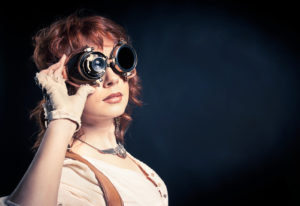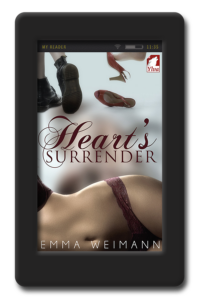Why Lesbian Fiction Is Awesome And You Need To Check It Out Today
Of course, we’re all for lesbian fiction here at Ylva Publishing. Plus, we also get annoyed at critics who claim that there is something cheap about a genre we adore so much that we built a business on it. I’m sure you have heard people say that lesbian fiction is low quality or that it carries a faint whiff of clandestine meetings in shady rooms. As with all prejudice, the bad reputation of lesbian books doesn’t make any sense.
So, here we are to make a statement and praise the queer female storytelling tradition of lesbian romance novels, as well as the other genres. But not only that – we also supply you with some arguments for the next time a sniffy woman wearing a labrys chain informs you that they just like their reading to be better than that.
Lesbian Romance Readers Are Not Lonely People With Bad Taste
The Huffington Post published a really good article on this from the straight point of view. It’s funny how easily the stereotype of the romance reader can be refuted by facts. Where do those stereotypes come from anyway? Well, there’s a general historical trend to devalue things that are favored by women. This is also what happened to knitting, high heels, and childcare.
Courtesy of 19th century logic, lesbian romance books can’t be good because not only are they liked by women, but they’re often also written by them. The opinion makers of the day were not exactly what you’d call connoisseurs of the genre. We’ll leave arguing the ridiculousness of this one in the much more eloquent hands of Virginia Woolf.
Lesbian Fiction Is Not The Little Sister Of Those Films That Reinvent Female Anatomy
You know those kind of movies, right? The ones that make you squint at the screen and mutter befuddled things like, “But you can’t do that with a high heel.” These films are the bane of everybody in the LGBT+ industry. Why? Well, because every Google keyword we market has to be carefully checked – it might already have been hogged by the straight male porno platforms.
Another thing: Have you ever been asked why you can’t just “leave your lesbian relationship in the bedroom?” There is an annoying and pervasive idea that queer identity must be focused on sex whenever it hasn’t already been pegged as cheap romance.
Lesbian Fiction Tells New Stories
We all know that sexuality is about so much more than only romance and sex. It touches so many parts of our lives. Case in point: Nobody ever seems to consider that young lesbian books are such a big part of the lesbian fiction genre. Or that coming-out stories provide some of lesfic’s most defining tropes. It’s a major part of who we are and what we want to read about. Mainstream books will never provide the kind of stories we are looking for.
But even our romantic stories differ often from the mainstream hetero ones. We usually don’t get to work off a neat, century-old social script that helps us jump from base to base and ends with 2.3 kids behind a white-picket fence. We’ve got to figure these things out by ourselves. And that leads us to tell new stories. Never mind that one’s writing is usually better if the author was forced to work through her topic consciously. And that leads to the fact that lesbian fiction books aren’t just interesting to lesbian romance readers either, but to everybody who desires something fresh.
Lesbian Fiction Provides A New Perspective

Just as women tell stories differently from men, queer people tell stories differently from straight people. So just the act of writing something from a queer point of view and for a queer audience specifically can give us intensely interesting insights in topics we thought we already knew inside and out. That makes lesbian fiction potentially captivating to straight people looking for fresh perspectives. And it also makes it interesting to queer women all around the world, because literature unites us across countries and cultures. Look at the world from an Indian lesbian’s point of view. Look at it from a Mexican or Nigerian one’s. Diversity rules. Don’t miss out on that stuff.
Lesbian Fiction Changes The World
The 1995, the documentary The Celluloid Closet, on the history of homosexuality in film, still provides one of the best overviews on how fiction influences society. It provides us with options on who to be and how to act. Otherwise we have to make it all up ourselves, which is infinitely harder, even for those of us who’ve had the privilege of a sound education on queer issues.
I remember, for example, what a revelation it was to me to encounter the strong silent lesbian cowboy for the first time in Jae’s historical novel Backwards To Oregon. It’s not that I wouldn’t have been able to picture a lesbian Clint Eastwood type before that – but it had never occurred to me to do so.
That’s another way lesbian fiction, romance or erotica or otherwise, provides us with stories we haven’t seen before. At Ylva, we’ve recently started tackling that very fact by starting a publication series focused on queer superheroes: Jump to our superheroines category to see what we have for you so far.
What do you love about lesbian fiction? Have you ever cured somebody of their prejudice against it? Tell us in the comments below. You might win a toaster oven. A fictional one, of course!
Copyright pictures above: Depositphotos.com/@Rangizzz + Depositphotos.com/@ IrinaBraga
Astrid Ohletz has an education as a library assistant but worked as a secretary for one of the partners of a large, international law firm for more than ten years before she became the CEO of Ylva Publishing. Publishing combines her love of books with her understanding of legal and economic issues. Being able to publish lesbian books where subtext is maintext is a dream come true for her. In her free time, she writes stories under the pseudonym Emma Weimann.




What do I love about lesbian fiction? It’s like you’ve stated: Lesbian fiction provides the world with stories that weren’t being shown before. Stories that were actively being suppressed or censored or erased or denied. That goes double for stories featuring lesbians from other marginalized groups, such as lesbian women of color, lesbian women who are neurodivergent, and lesbian women who have disabilities. I’m grateful to see the issues I or people I know have faced explored by lesbian/LGBT+ authors whose unique views—as expressed through their characters and their story themes—shine lights on the different ways people live through struggles and joys. To have that validation is cathartic and life-affirming. I like how many lesbian novels are not exclusionary when they explore the lives of lesbians—their lesbians have real flaws, they have LGBT+ & non-LGBT+ friends, relatives and lovers, and they have complex views on careers, hobbies, health, food, books, movies, parenting, monogamy, and marriage. It’s so important to see healthy love & living in all its forms across all walks of life. That’s a good thing for all of humanity—we need more validation of love & acceptance, especially in these turbulent times.
Because I read many Young Adult books—I’m a mother of four teenagers and discuss books with them (gotta be a hip mom, right? lol)—I’ve come across several mainstream LGBT+ Young Adult books or ones with LGBT+ characters, some are New York Times bestsellers and one YA lesbian book, “The Miseducation of Cameron Post,” is becoming a movie. Lately, there’s been a push for greater and more positive representation of LGBT+ and ownvoices YA stories in mainstream books, from coming out stories to ‘already out’ stories as wells as fluffy contemporary stories to genre (fantasy/scifi) stories. Because, to paraphrase, it’s a big part of who lesbian and LGBT+ teens are and what they want to read. Lesfic authors have already been providing such books, for sure, especially when it comes to positive lesbian YA books. In mainstream, the biggie task is eliminating the preponderance of stories don’t even have LGBT+/POC characters or that bury LGBT+/POC characters. Or that paint LGBT+/POC characters as antagonists or as token message billboards.
The aforementioned development in mainstream teen fiction comes from today’s teens—who are growing up in an increasingly multicultural world and who are often multicultural/LGBT+ people themselves and who grow up to be authors themselves—demanding more diversity in their books. Equally important but also historical significant, that development also comes from lesfic and LGBT+ author communities cementing and vocalizing a history of telling & advocating LGBT+ YA stories through self-publishing, boutique publishing or fighting in the trenches of mainstream publishing and by having created the initial safe spaces where LGBT+ fiction developed and was able to grow without censorship.
On a personal level, I’m grateful that my children can hop online and come to a site like Ylva’s to find a YA lesbian/YA LGBT+ novel or walk into a bookstore to find one because, as a child of the 80s in my neck of the woods, I didn’t really have that option. Not until, like, we read “The Color Purple” high school senior year (in contrast, my kids’ English classes taught “The Color Purple” freshman year).